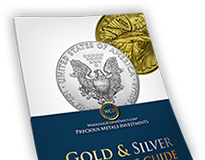- Gold $0.00 $0.00
- Silver $0.00 $0.00
- Platinum $0.00 $0.00
- Palladium $0.00 $0.00
Pricing:
| QUANTITY | E-CHECK/WIRE | CREDIT CARD |
|---|---|---|
| Any | $4,805.88 | $5,006.29 |

Get Our Free
Gold & Silver
Investor's
Guide
Description:
The United States changed significantly as a country in the years between 1849 and 1907. It was also during those years that the Liberty Double Eagle, a coin of $20 face value and .900 pure gold, was continuously struck. This lengthy mintage tenure has helped the availability of Liberty Double Eagles.
As 1849 began, James K. Polk was the country's President; in February, he would become the earliest in-power U.S. President to be photographed. However, that year, California was not yet an official U.S. state; it would become so in 1850 after the California Gold Rush began.
Major events that unfolded as the Liberty Double Eagle's production continued include the 1860s American Civil War, which was triggered by internal division relating to slaves' rights. Led by Abraham Lincoln, the opposed-to-slavery United States eventually defeated the Confederate States of America; this helped secure the widespread abandonment of slavery around the United States. By 1907, the U.S. had recovered significantly from this conflict, the Reconstruction Era having ended three decades earlier. Theodore Roosevelt, whose likeness would eventually join Lincoln's on Mount Rushmore, was then President and oversaw the Liberty Double Eagle's discontinuation.
Roosevelt was evidently not taken with this double eagle. Writing to Leslie Mortier Shaw, the Treasury Secretary, in 1904, he complained that the then-circulating U.S. coinage was artistically lacking, but asked whether more beautiful coins could supplant it. The President's objection here led to a greatly redesigned coin, the Saint-Gaudens double eagle, replacing the earlier Liberty equivalent. However, not everyone has agreed with Roosevelt's damning assessment; indeed, many 21st century collectors have reacted very differently.
The careful attention to detail with the Liberty coin cannot be denied, regardless of the artistic worth. Featured is a Greco-Roman Liberty of apparently young age. Her hair is pulled back, but some strands can be seen tumbling down her neck. The piece's reverse prominently shows a heraldic eagle clutching a double ribbon. With his inclusion of this ribbon, which reads "E Pluribus Unum," the designer was alluding to the coin's denomination, which was twice that of the eagle coin face valued at $10.
Perhaps the most blatant sign of this particular designer's influence however, is the appearance of the initials "JBL" on the head's truncation. Those are the initials of James B. Longacre, who indeed designed the coin and was responsible for various other mid-19th century U.S. coins. The Liberty Double Eagle was one of the earliest American federal coins to feature initials of the designer. Individual Liberty Double Eagles can however differ in the mint marks that they also show, except in the instance of Philadelphia Mint coins, on which mint marks are omitted.
Overall, five different mints were involved in this double eagle's production. The other four as yet unmentioned were at New Orleans, San Francisco, Denver and Carson City; the mint marks on these 34.1 millimeter, 33.431 gram coins are listed here respectively to the aforementioned cities mints O, S, D, and CC.
Features of the Common Date $20 Liberty Gold Double Eagle MS63:
- Reverse showing beautiful heraldic imagery
- Thirteen stars resembling a halo
- A Type I, Type II, or Type III design
Orders placed for products that are not a specific year will be fulfilled with coins of any date, based on availability. Orders of multiple coins may be filled with the same year or a variety of years.
Specifications:
| Product Type | Coin |
|---|---|
| Coin Series | Pre-33 Gold |
| Purity | 90% |
| Mint/Refinery | U.S. Mint |
| Metal Type | Gold |
| Face Value | $20 |
| Grade | MS63 |
| Coin Type | Certified |
| Modern or Historical | Pre-33 |
| Grade Service | NGC |
| Year | Varies |
| Metal Weight | 0.9675 troy oz |







